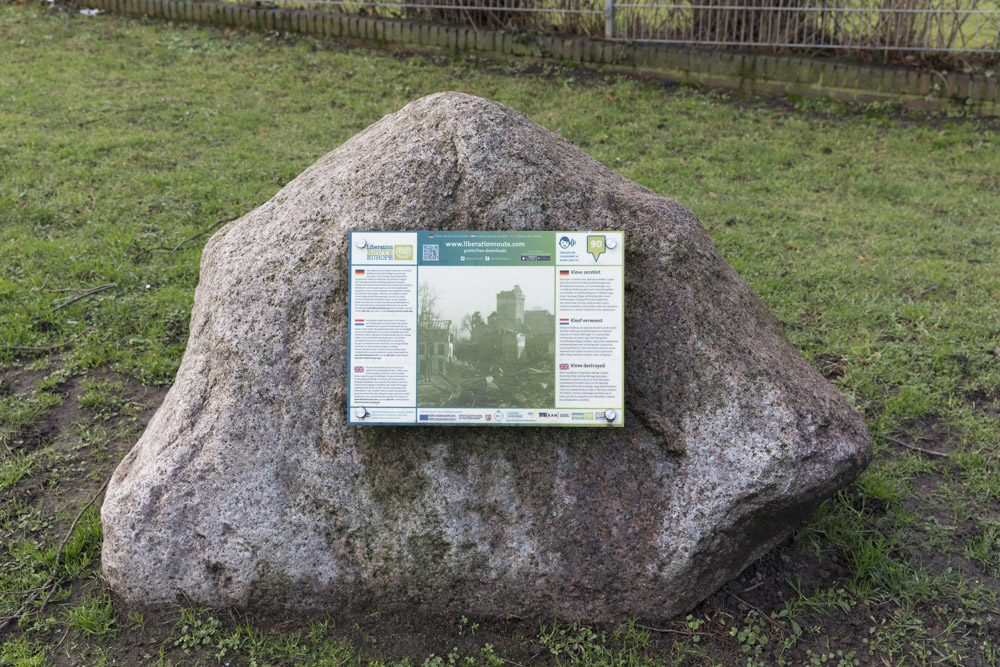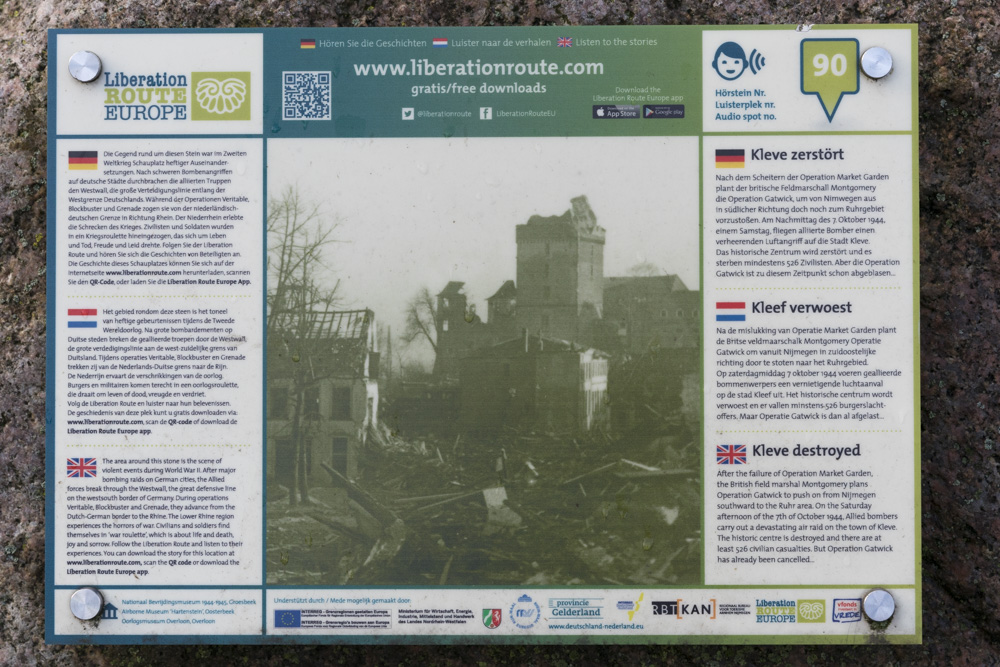Liberation Route Marker 090: Kleve destroyed
Kleve destroyed
September 1944: after the failure of Operation Market Garden, the British Field Marshal Montgomery plans Operation Gatwick to still push on from Nijmegen to the Ruhr. On the 7th of October, Allied bombers launch air attacks on Kleve. The historic centre is destroyed and there are hundreds of civilian casualties. Operation Gatwick is then cancelled and later replaced by Operation Veritable.
When it became clear that the actual aim of Operation Market Garden (the capture of Arnhem on the right bank of the Rhine in order to push through from there to the Ruhr) had not been achieved, the Allies had to devise a new plan.
The British, led by Bernard Montgomery, now planned Operation Gatwick, which involved a push from Nijmegen along the south bank of the Rhine at Wesel. There, the Rhine would be crossed towards the Ruhr region.
From The 22nd of September 1944, Allied bombers attack the Kleve region. On Saturday the 7th of October, Kleve was subjected to a huge bombardment, led by Lancaster and Halifax bombers, followed by another on Emmerich. These attacks not only resulted in huge damage to the town, there were also many casualties: according to the latest estimates 500 civilians alone were killed. The bombardment, which destroyed the historic centre of Kleve, including the Schwanenturm, has become a symbol in the town for the entire war. When it took place, Operation Gatwick had already been postponed and later on replaced by Operation Veritable.
Audiospot - Kleve destroyed
Liberation Route Europe is a certified Cultural Route of the Council of Europe. With hundreds of sites and stories in nine European countries, the route links the main regions along the advance of the Allied Forces in 1943-1945.
The entire route consists of themed routes that can be travelled by by hiking, walking, cycling and car. These routes pass numerous historical and interesting sites and tell stories from a multitude of perspectives that were important in the final phase of World War II.
Many routes feature listening spots, offering the opportunity to listen to a historical story at a location. In addition, many ‘Vectors of Memory’ have been placed, indicating that the passer-by is on one of the Liberation Routes.
The routes can be found on the Liberation Route Europe website or in the app through which many stories can also be listened to.
Do you have more information about this location? Inform us!
Source
- Text: TracesOfWar & Liberation Route Europe
- Photos: Arjan Vrieze
Related books
Nearby
Point of interest
- Castle Schwanenburg Kleve - Kleve
- Bullet and Grenade Impacts Kleve - Kleve
- Bomb Impacts Bridge Kleve - Kleve
Monument
Cemetery
- German War Graves Kleve - Kleve
- German War Cemetery Kleve-Dönsbrügger Heide - Kleve (Donsbrüggen)
- German War Cemetery Bedburg-Hau - Bedburg-Hau (Kleve)
Remembrance Stone
- Stumbling Stones Grosser Markt 26 - Kleve
- Stumbling Stone Marktstraße 24 - Kleve
- Stumbling Stones Hagsche Straße 10 - Kleve








